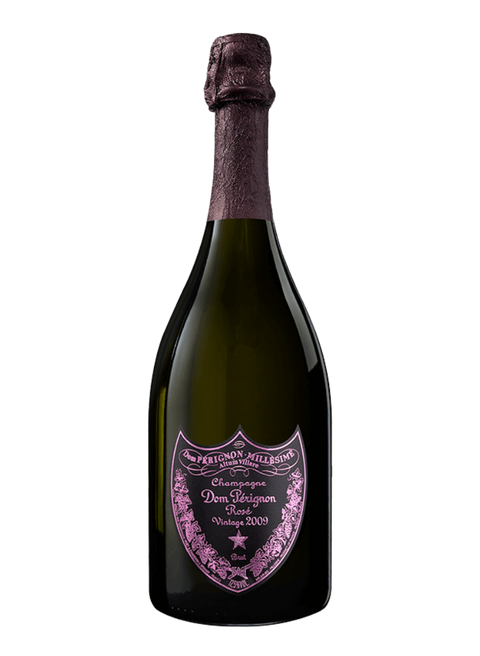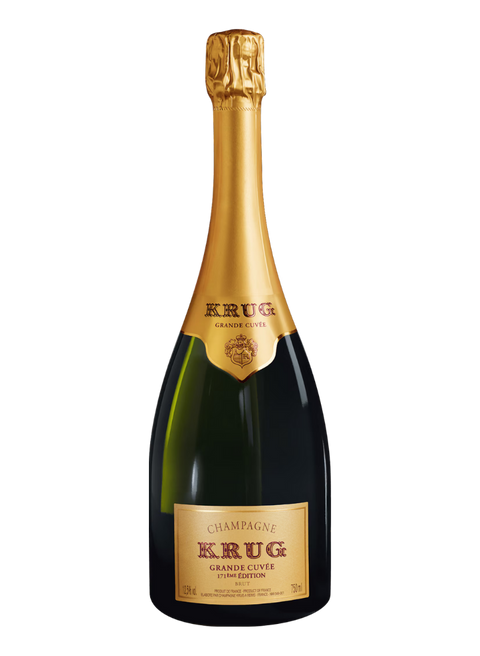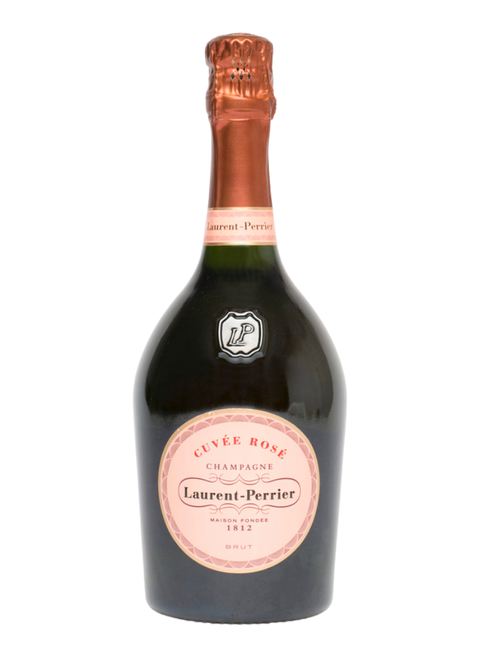Champagne Matters
We have introduced a fast moving list of Grandes Marques Champagnes, including premium bottles from Pol Roger, Dom Pérignon, Krug and Ruinart, among others.
To celebrate, here's a run down of some of our most asked Champagne questions!
What grapes go into Champagne?
The traditional blend is a mix of the white Chardonnay grape and red Pinot Noir and Pinot Meunier grapes but four other grapes are permitted. These are Arbane – which is a rare white grape that adds aromatic qualities to the wine, Petit Meslier, which is a little like Chardonnay and adds unique floral and vegetal notes, Pinot Blanc, that can add complexity and depth and Pinot Gris, a greyish pink grape that adds floral notes and a little spice.
Most Champagnes however, stick to either 100% Chardonnay or a mix of Chardonnay, Pinot Noir and Pinot Meunier.
What is a Blanc de Blanc Champagne?
A Blanc de Blanc Champagne is made entirely from Chardonnay grapes.
How is Champagne made?
Champagne is created using a traditional method known as ‘méthode champenoise,’ where the bubbles form naturally during a second fermentation inside the bottle. Hand-picked grapes from each variety are gently pressed and fermented to produce a still, dry wine. These wines are then blended across different plots and vintages (year it is made) to create a unique ‘cuvé’.
This is bottled with a mixture of yeast and sugar, called liqueur de tirage, which triggers the second fermentation. As the yeast consumes the sugar, it releases carbon dioxide, forming the fine bubbles that make Champagne so distinctive.
The bottles are aged for months or even years in cool cellars, allowing complex flavours to develop. During this time, the yeast sediment—known as the lees—settles inside the bottle. Through a process called riddling, the bottles are gradually turned to move the lees towards the neck, which is then frozen and removed in a step known as disgorgement. A small amount of wine and sugar, called the dosage, is added to adjust sweetness before the bottle is sealed with its familiar cork and wire cage, to stop it from popping off at the wrong moment.
What is a Vintage Champagne?
A vintage Champagne is one made entirely from the grapes from one growing season. These are much rarer than the usual NV (Non Vintage) Champagnes as all the growing conditions must be perfect to create grapes of sufficient quality to use only the grapes of that year’s harvests.
How many bubbles are there in a bottle of Champagne?
Approximately 49 million. A good question for your next pub quiz.
How much sugar goes into Champagne
There are strict rules around the quantity of sugar that can be allowed in Champagne, according to its labelling. The most commonly found in the UK is Brut (which means dry) and must contain between 6 and 12 grams of residual sugar per litre. You may sometimes see Brut Zero on a bottle which is the driest style of all, with less than 6 grams of residual sugar per litre. Ultra Brut and Extra Brut are also drier than Brut.
However, slightly confusingly, Extra Dry sparkling wines contain between 12 and 17 grams of residual sugar per litre so have a sweeter finish than any of the Bruts.
How do I open a bottle of Champagne to avoid spillage?
Open the bottle in the usual way and hold it at an angle of 45 degrees. Resist the urge to move the bottle upright if it starts to spill over. Rather drop the neck down by a couple of degrees until the Champagne miraculously disappears back into the bottle.
Which is the best glass for Champagne?
Champagne is a party drink, a wine for celebration and fun so I don't want to dampen anyone's joy when it comes to what to drink it from. However, there are two options for the connoisseur; a tulip style glass that’s a little thinner and taller than a white wine glass, or a flute that is correctly proportioned to encourage the string of little bubbles to float upwards. Currently there is a big push towards tulip shaped glasses, but sommeliers agree that there is nothing that screams celebration more than a well-heeled flute.
The popular vintage Champagne saucers are generally not considered the ideal vessel for tasting good Champagnes because the wide surface allows the bubbles to dissipate too quickly and much of the aroma is lost as the glass is generally filled almost to the top. But they do, of course, look pretty and contribute to the party atmosphere.

The Chateau at Moët et Chandon
Founded in 1743, Moët & Chandon is one of Champagne’s largest and most renowned houses. Based in Épernay, it owns over 1,000 hectares of vineyards.

Hand riddling the bottles at Krug
Krug Grande Cuvée was created from Joseph Krug’s aim to make the best possible champagne every year, regardless of weather or vintage.

The cellars at Laurent Perrier
Laurent Perrier Rosé is synonymous with special occasions the world over - and equally famous for its 16th century bottle design's shapely curves.

Ruinart Blanc de Blanc
Maison Ruinart, established in 1729, is the oldest Champagne house. Their Blanc de Blancs, first created in the 1950s, has become a global icon.












Comments (0)
There are no comments for this article. Be the first one to leave a message!